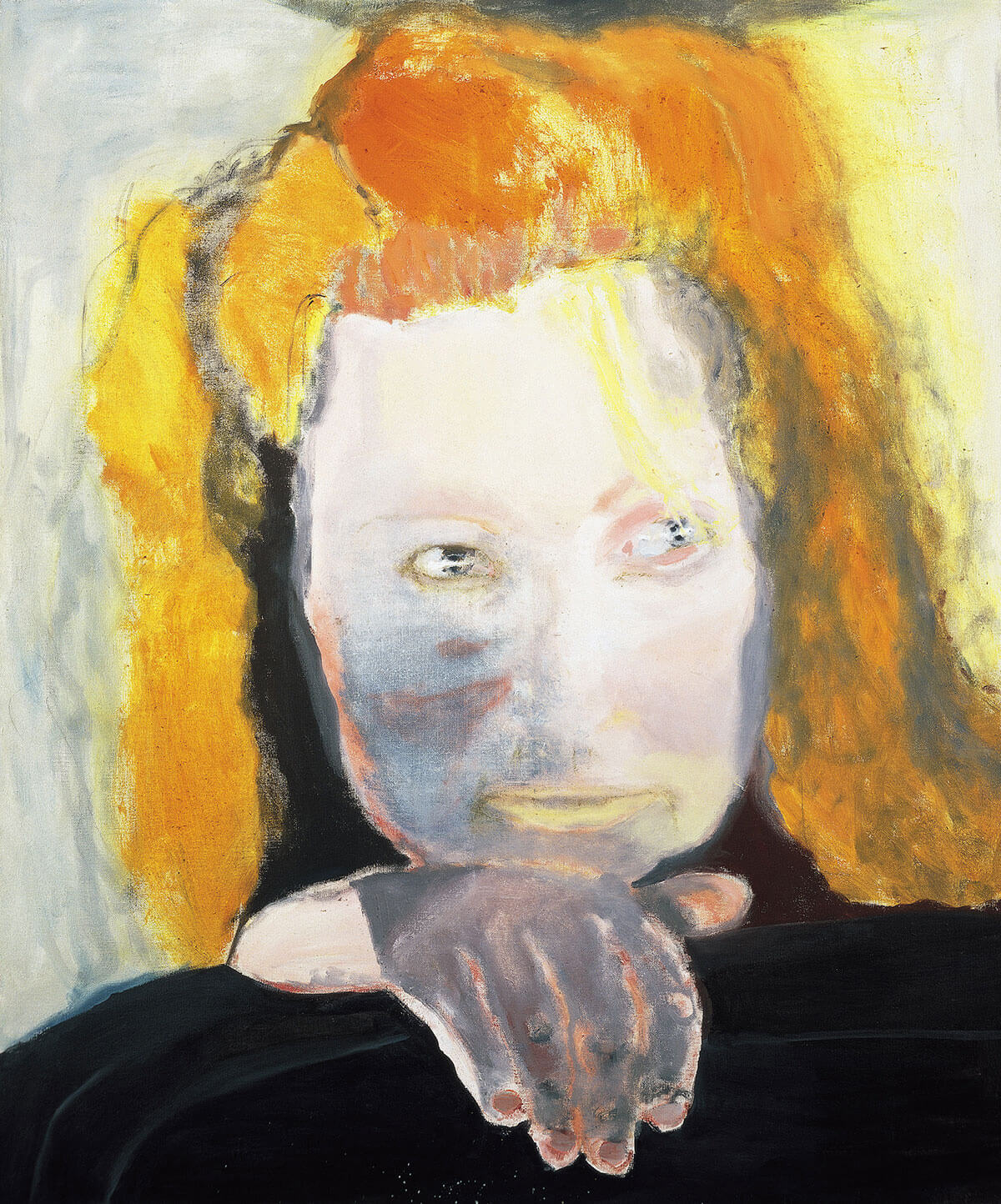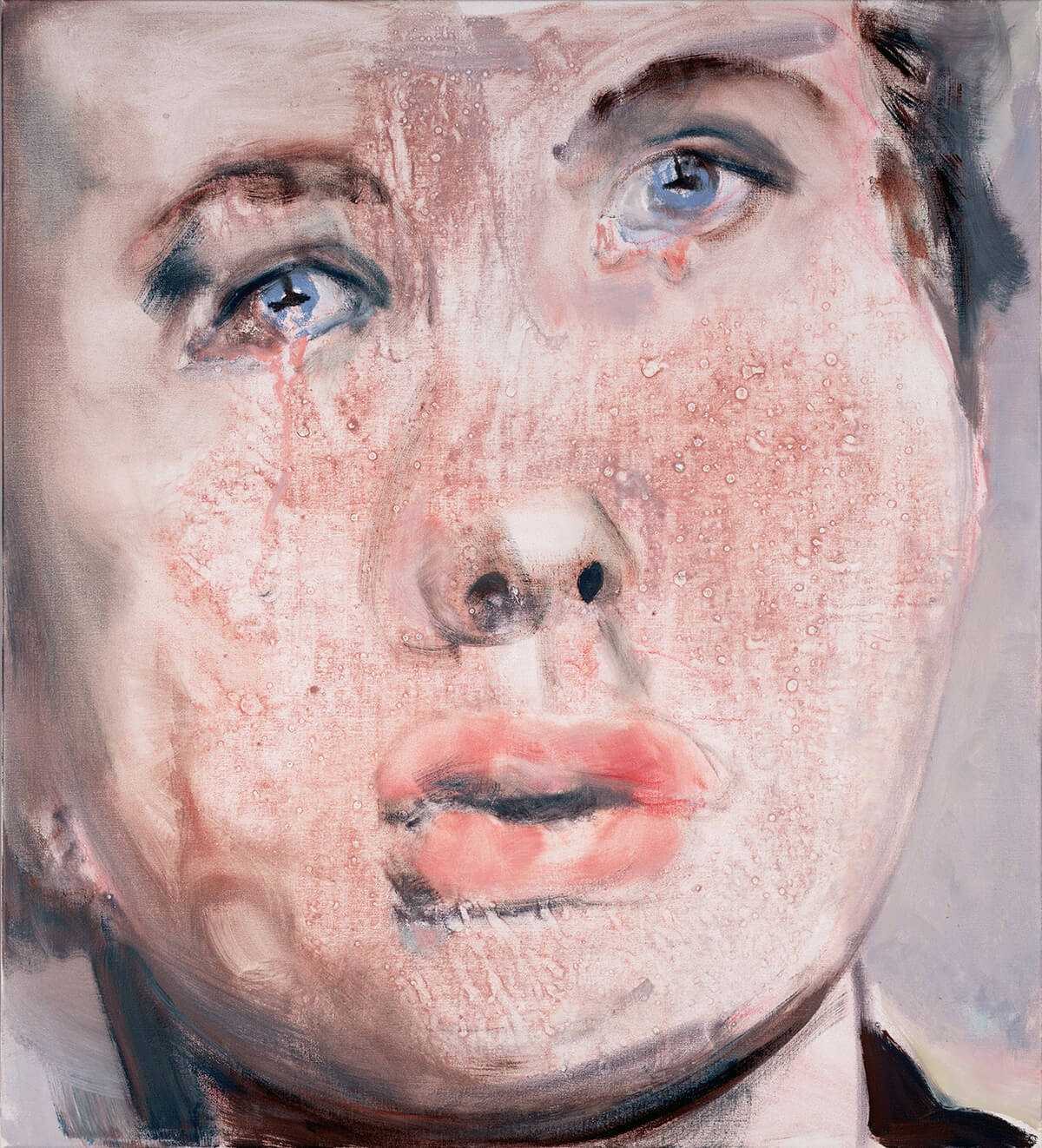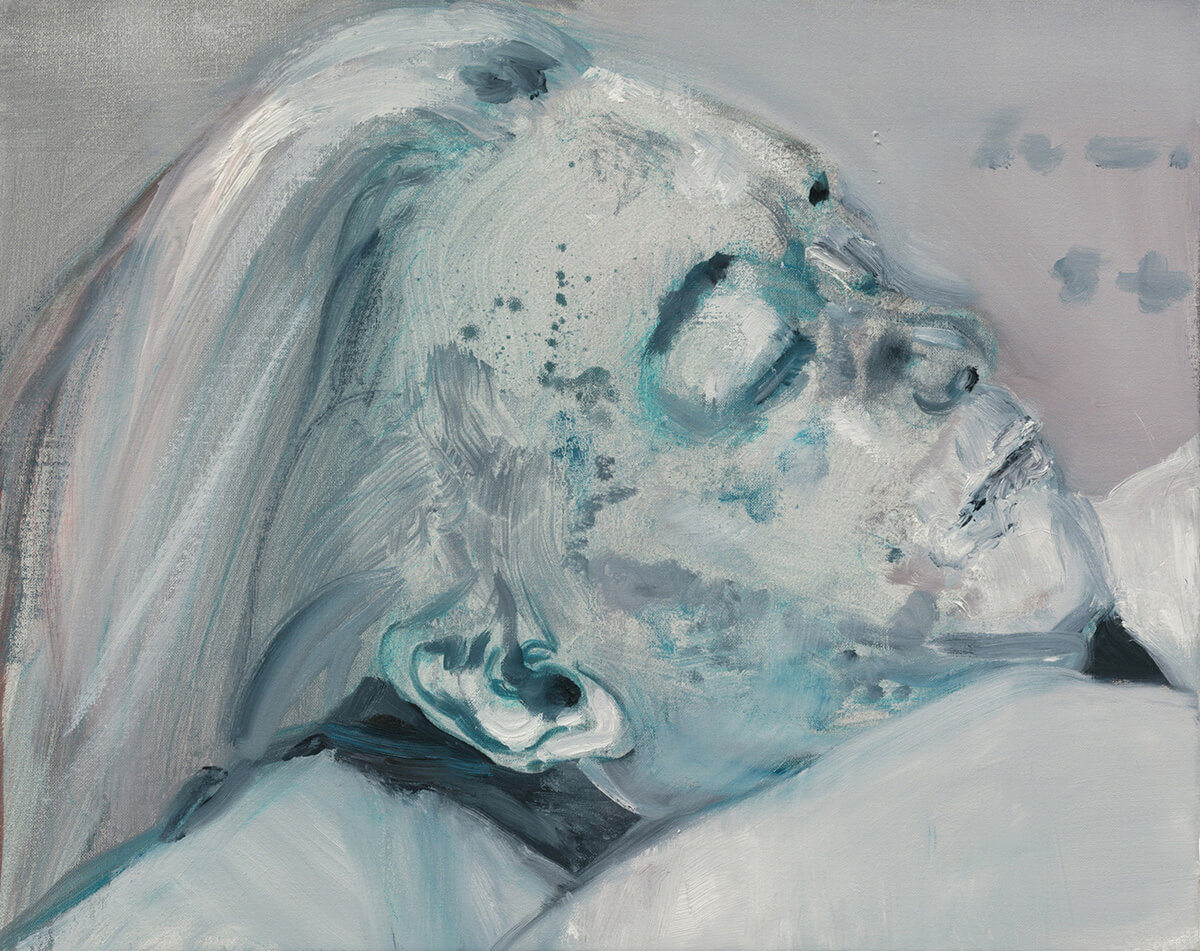Stills/Faces
Kate Zambreno
March 12, 2018

Appendix G
On my 40th birthday I am on the couch looking at Marguerite Duras’s Wikipedia page. I read that she wrote Hiroshima mon Amour and The Ravishing of Lol Stein in her mid-forties, and this makes me feel calmer. My daughter Leo is making ecstatic and sometimes pained sounds with her father in the kitchen—their morning routine of watching the feral cats eating the food John leaves outside of the window. She wakes up concerned about the cats. Maybe she wonders why they are outdoors and not inside, like us. How enraptured I’ve become by my baby’s open, ferocious face. It’s everything that is beautiful to me. Sometimes she will kiss me suddenly, our teeth clashing, other times she will hit me repeatedly in the face, laughing. She’s lazing on the floor now, sucking her pacifier and doing pelvic thrusts, her sleepy pre-nap exercise. Today for the first time I saw her offer her face for the dog to kiss, which he did, repeatedly. She’s spinning around and around, doing her sleepy walk, as the dog watches her. It is snowing. I watch it. Our tiny Christmas tree is still up. Everything slows until John and I can make notes in the near dark, during her sleep.
The entire past year I have been writing these series of texts, so often in the dark while my baby sleeps. There is something fitting about this, to be almost in the dark while tracing through the shadow of the book on my mother that I worked on for a decade, begun so soon after her death, and that I only finished in the early weeks of being pregnant with Leo. Something uncanny about this, my new solitude that I write to, always doubled, even though she sleeps. That these appendices, thinking about what I failed at or omitted in Book of Mutter, or want to continue writing through, are the new container in which I can put my memories, and by that I mean my ongoing grief.
If I begin to write something today I can be reminded again of how a text can mark time. How a painting can do this also—I worked on this painting today. I am now reading about the South African painter Marlene Dumas. Dumas thought the speed of a work was important—her paintings that often remain closer to drawings, with their sources found in photographs and film stills. But she says somewhere that the meaning of a painting is not where it begins, or where it ends, but somewhere between the beginning and the end, for therein lies the shadow. When working on the book about my mother I often stared at an image of Dumas’s painting of the recently dead Marilyn Monroe, painted from a photograph from her autopsy. Autopsy comes from the Greek: to see with one’s own eyes. I had seen the painting in a show of Marlene Dumas, I believe in New York, a decade ago, when I was working on the book. There was something about the gestures of the painting and its coloration that reminded me of Francis Bacon’s painting of William Blake’s life mask, but this is like a death mask. I remember being moved by Dumas’s icy blues. Something shocking about making beautiful Marilyn’s puffy and bruised face, making beautiful this deeply upsetting photograph of such a life force in movies now dead and decaying (a contrast with how Warhol painted an endless emptiness of Marilyn’s almost clownish grin from the Niagara publicity still).
Previous versions of the book on my mother included a passage in which I detailed the room where Marilyn Monroe was found dead, on the evening of August 4, 1962. How she had retreated to the bedroom with her telephone. How she must have dragged the long extension cord down the hallway into the bedroom. How she made a number of calls, including one to the movie actor Peter Lawford. How she called her hairdresser to schedule an appointment. How she was found the next morning by police completely naked, face down, positioned diagonally across her bed, still holding the telephone. How around 10pm her live-in housekeeper had walked past the door and saw a light underneath but decided not to disturb her. How at midnight she saw the light again and called Marilyn’s psychiatrist. How the psychiatrist claims he tried to break through the door but failed. How when interviewed he stated that he saw Marilyn lying there holding the telephone through the French windows outside so then smashed them in. How there were dark curtains covering the windows. How when the police sergeant arrived the housekeeper had been doing laundry and cleaning. How the bed had fresh linen on it. How when questioned she said that she wanted the place to look nice. How this was the one room Marilyn didn’t allow her to enter. All of which I excised in the final version—including more about the sadness of her life and the spectacle of suspicion surrounding her death—although there are ghostly fragments that remain.

I couldn’t remember why I felt compelled to juxtapose these scenes of Marilyn Monroe’s death and myth in a book about my mother, what that original impulse was, or why I wanted to include portraits of the isolation and death of Joan of Arc, or actresses such as Renée Falconetti, playing Joan of Arc, or Barbara Loden or Joan Crawford. And yet I read recently that Marlene Dumas painted “Dead Marilyn” in 2008 as a response to her mother’s death the year before, also out of an inability to finish the painting of her mother that she had been working on. I want to understand why Marlene Dumas painted “Dead Marilyn” as opposed to her mother, as a way through her grief. The abstraction of the faces of the film stills and fallen stars that Dumas painted in that year, the year after her mother’s death, as opposed to the painting of her mother, that she could not complete. “For Whom the Bell Tolls,” an extreme close-up of the face of Ingrid Bergman, her face layered with tears, so that her skin appears pink-warped and burned. Emmanuelle Riva’s face in Hiroshima mon Amour. A still most likely from when she is in bed, her gaze intense with remembering. Yet in the painting the face of the woman looks burned or fallen or dead, perhaps texturally mixing the sweat of the lovers with the ashes and disfigured skin of the victims of the atomic bombing shown at the beginning of the film, these victims the white French woman wants so desperately to empathize with, to merge her own personal devastation of wartime with their horror.
Perhaps Dumas was trying to think of her mother when painting these actresses in film stills playing characters who are individuals trapped in history, wrestling with personal experiences of grief, characters who are also actresses, like Emmanuelle Riva in Hiroshima mon Amour, who is filming a peace film in Hiroshima. Perhaps the painter’s sadness mourning her mother, a white woman raising children in rural South Africa during apartheid, was too complicated, mixed in with what comes through in other work, grief and guilt as to the painter’s role in history and her country’s collective past of colonialism and violence (her self-portrait entitled “Evil is Banal,” that ambiguous gaze).
Dumas’s painting of Renée Falconetti’s Joan of Arc in “Sleeping with the Enemy,” also cadaver-like, like so many of her close-ups. How her canvases can become coffins for her figures. Dumas has explained with this series of crying women that images of sadness are often in film but rarely in contemporary painting. There is something private and opaque about these paintings. Also, when watching these actresses on screen we can only imagine their interiority. What makes you so sad, Clark Gable asks Marilyn Monroe in The Misfits, as he/we take in the blank beauty of her face, her head reclined back. I think you’re the saddest girl I’ve ever met.
I want to think about images of sadness that we borrow from. Marlene Dumas’s series of crying women in cinema reminds me of that moment near the beginning of Claudia Rankine’s Don’t Let Me Be Lonely, when the speaker visits the Museum of Emotions in London, and is supposed to answer Yes or No to the question in an installation: “Were you terribly upset and did you find yourself weeping when Princess Diana died?” The speaker steps on the tile for “No” and is not allowed to continue the quiz. She then wonders if Princess Diana was ever really alive to anyone outside of those who knew her. Perhaps mourning her death was in some ways a projection. A still from a TV, the thousands of mourners leaving flowers in front of the palace. Rankine writes, “Weren’t they mourning the protection they felt she should have had? A protection they’ll never have? Weren’t they simply grieving the random inevitability of their own deaths?”
These blocks of texts like film stills or the static of TV screens. A contemplative space to gaze into. In both Dumas’s paintings and Rankine’s text, a repository of constant images from the media. The speaker sits in her room and watches TV. An early memory of watching movies as a child, and always wondering if the actor on the screen is now dead. “The years went by and people only died on television—if they weren’t Black, they were wearing black or were terminally ill.” She feels oversaturated by a collective grief, what she sees through the screen, black men murdered or beaten by police, the events of 9/11. National images of mourning. Which reminds me of Marlene Dumas’s series of African women whose husbands were political prisoners or assassinated—like her paintings of Pauline Lumumba, inspired by that newspaper photograph of her walking through the street, chest ritualistically bared, mourning her slain husband, the former prime minister of the Democratic Republic of the Congo.

Don’t Let Me Be Lonely is a museum of sadness, both private and collective. In the first passage, a block of text in its own page/wall, like an installation, two layered childhood memories, her mother’s stillbirth when the speaker was eight, and her father sitting on a stoop outside, his face leaking, as his mother had just died. The book begins, “There was a time I could say no one I knew well had died. This is not to suggest no one died.” These juxtaposed portraits of private grief—the speaker’s depression, her sister’s tragic loss of her entire family in a car crash, a friend dying of breast cancer, another friend’s diagnosis of Alzheimer’s, another friend’s even more severe depression. In that scene, the speaker narrates going over to her friend’s house, where they watch Werner Herzog’s Fitzcarraldo. As they watch the film her friend begins weeping. A still of Klaus Kinski. The next section/installation, after a blank page and another blank page, with an illustration of the static of a TV screen, an image of Timothy McVeigh’s empty electric chair (Warhol?), a consideration of Jacques Derrida’s writings on forgiveness. The speaker decides that forgiveness is not a form of madness, as Derrida claims, but instead a sort of death. “It is a feeling of nothingness that cannot be communicated to another, an absence, a bottomless vacancy held by the living, beyond all that is hated or loved.”
A large bouquet of pale pink and white roses from my sister comes to the door. They are almost frozen. Later, peach roses from John. Did someone die? I joke. My sister texts me, when I thank her for the flowers, that she thinks her husband is leaving her. I go on their Instagram page—he is almost erased. Only smiling faces on Instagram. And for my sister, to me, as well, even with this news, always smiley emoticons. My sister hidden and private, like our mother was. Or perhaps she buries these feelings down and refuses them. Or perhaps just refuses them to me, I don’t know. I forgot in the Rankine, although I’ve read it many times before, that she writes of turning 40 towards the end, receiving lilies from her parents. How strange that I am to reread it today, how I reached for it, from the top of the couch, it was just sitting there on the bookshelf. “It occurs to me that forty could be half my life or it could be all my life,” she writes.
I remember now, when my mother turned 40 her friends threw her an Over the Hill party. Our basement was decorated with black balloons. She received a birthday card that described what the day was like in New York, the day she was born. All her life her mother, who she was estranged from, had told her that she gave birth on Thanksgiving, and had to miss Thanksgiving dinner, and how upset she was by this. But it turns out, she wasn’t born on Thanksgiving. My mother was furious. I wrote this all in the book on my mother, but took it out, I don’t know why. It felt silly, maybe. Or it wasn’t my memory, but what my father, later, reported to me. My mother with all of her secrets. I go back to the beginning of Don’t Let Me Be Lonely, the mother returning home from the hospital without a baby. The memory of her mother’s seeming nonchalance versus her father’s weeping face. “Did she shrug? She was the kind of woman who liked to shrug; deep within her was an everlasting shrug.” Two years later Dumas finished the painting of her mother, which was painted from a photograph of her mother as a girl (“My moeder voor sy my moeder was (My mother before she was my mother),” a Barthesian construct). A young woman in white, waving, her face white, blurred, ghostly, against a background of gold. Of her mother, Rankine writes, “She wants me to lead a readable life—one that can be read as worthwhile, and successful.” A readable life. Is that the same as a writable one?
I read the dedication to Rankine’s book—I realize it’s to her daughter, who it seems she was pregnant with while finishing the book in her 40th year. She doesn’t mention pregnancy or birth in the book. The extreme intimacy and yet opacity of the speaker. And yet does the work exist in this postpartum space, something of its grief and exhaustion, its porousness? A book becomes of its time, the body in the room in the act of composition, and somehow out of its time. Between the two is the shadow.
The Appendix Project is forthcoming from Semiotext(e) in Spring 2019.